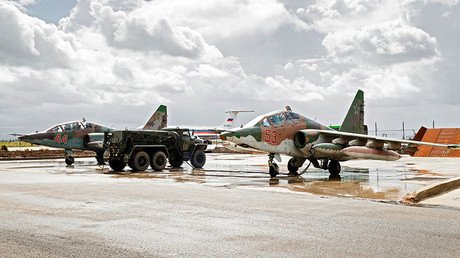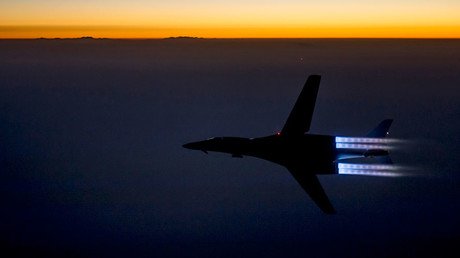Senior US and Russian military commanders have discussed the situation in Syria, where a Russian-proposed plan to establish four safe zones to promote a cessation of hostilities came into force hours ago.
General Joseph Dunford, the chairman of the US Joint Chiefs of Staff, called General Valery Gerasimov, the chairman of the Russian General Staff, to discuss the latest developments in Syria by phone, the Russian Defense Ministry reported.
The ministry’s statement was vague on the results of the consultations, saying that there was “a confirmation of the readiness to resume, in full volume, the implementation by the parties of the obligations under the Russian-American Memorandum on ensuring safety and prevention of incidents in the airspace of Syria.”
Russia suspended the memorandum after the US launched Tomahawk missiles at a Syrian airbase last month. Moscow considers the attack to have been an act of international aggression. The document is meant to prevent possible adverse encounters between American and Russian warplanes over Syria.
The ministry said the officials had also discussed “additional measures to prevent conflict situations during joint operations against ISIL and Jabhat Al-Nusra,” the two groups designated by the UN as terrorists operating in Syria.
The Russian Defense Ministry has dismissed western media reports about some alleged clashes between Syrian government forces and opposition groups in Hama province following the safe zone initiative which came into effect hours ago.
It also said that the situation in the safe zones remains stable.
However, the ministry confirmed that government forces came under fire in Hama province on Friday night. The attackers turned out to be Al Nusra terrorists, the Russian defence ministry said, citing data provided by the Turkish military. The extremists’ combat sites were destroyed, it added.
Russia, Turkey, and Iran agreed upon the plan to establish four safe zones in Syria during peace talks in Astana, Kazakhstan. It is meant to provide a degree of safety to armed opposition groups that pledge to end their violent revolt and seek a political transition in Syria. Under the plan, Damascus and these groups have agreed not to engage in hostilities with each other in those safe zones.
The safe zones have been established in Syria’s Idlib Governorate and parts of neighboring Latakia, Aleppo and Hama provinces, the northern part of Homs province, Damascus’ Eastern Ghouta neighborhood, and parts of southern Deraa and Quneitra provinces that border on Jordan. The exact borders of the zones have yet to be demarked and agreed upon by the three guarantors of the plan.
Observation posts and checkpoints manned by the guarantors are to be established along the lines to monitor how well the deal is observed. The first hours after the agreement came into force were marked by a reduced level of violence, but some violations have been reported.
The Russian Center for Syrian reconciliation said on Saturday that it had received reports that some jihadist groups were planning to “attempt to derail the memorandum,” but added that the Russian military is prepared to “eliminate any possible provocations by the terrorists.”
The deal offers no protection to terrorist groups such as Islamic State (formerly ISIS/ISIL), which remain legitimate targets in Syria. The armed opposition is expected to keep the jihadists from using the zones as safe havens. The memorandum also states that the three guarantors will “take all necessary measures to continue the fight” against the terrorists.
The plan has been hailed by UN and received reserved approval from Washington. Russia said it expects the US-led coalition to refrain from flying over the safe zones, but the Pentagon has yet to publicly make such a commitment.


